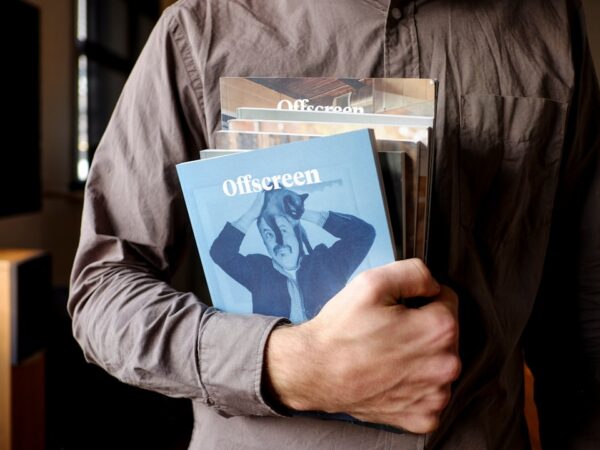
Emma: From Austen’s Book to the Big Screen
Jane Austen’s Emma is a classic novel that has captivated readers for over two centuries. First published in 1815, Emma tells the story of a young woman named Emma Woodhouse who fancies herself a matchmaker. As she meddles in the romantic lives of those around her, she learns valuable lessons about love, friendship, and the consequences of her actions.
Emma has been adapted for the big screen numerous times, with each adaptation bringing its own unique interpretation of Austen’s beloved characters and story. From the 1996 film starring Gwyneth Paltrow to the more recent 2020 adaptation starring Anya Taylor-Joy, filmmakers have sought to capture the wit, charm, and timeless appeal of Austen’s novel.
Key Takeaways
- Emma, a novel by Jane Austen, has been adapted into various films and TV series.
- The character of Emma has evolved from a flawed and naive young woman in the book to a more sympathetic and relatable character in the films.
- Adapting Emma for the big screen presents both challenges and opportunities, such as condensing the story and bringing the characters to life.
- Emma’s social and historical context, set in Regency England, is an important aspect of the story and adds to its enduring appeal.
- The casting of the perfect leading lady and supporting cast, as well as the visual aesthetics and music, all contribute to the success of Emma adaptations.
The Literary Legacy of Jane Austen’s Emma
Emma is not only a delightful story but also a rich exploration of themes and motifs that continue to resonate with readers today. One of the central themes of the novel is the importance of self-awareness and personal growth. Throughout the story, Emma learns to recognize her own flaws and prejudices, ultimately becoming a more compassionate and understanding person.
Another theme that runs throughout Emma is the role of social class and status in Regency England. Austen explores the limitations and expectations placed on individuals based on their social standing, as well as the consequences of defying societal norms. This theme adds depth and complexity to the story, highlighting the challenges faced by characters like Emma who must navigate the rigid social hierarchy of their time.
Adapting Emma for the Big Screen: Challenges and Opportunities
Adapting a classic novel like Emma for film presents both challenges and opportunities for filmmakers. One of the main challenges is condensing a lengthy novel into a two-hour film while still capturing its essence. Filmmakers must carefully select which scenes and dialogue to include, often making difficult decisions about what to cut or modify.
However, the visual medium of film also presents unique opportunities to bring Austen’s world to life. Filmmakers can use cinematography, set design, and costume design to create a visually stunning and immersive experience for audiences. They can also take advantage of the medium’s ability to convey emotion through facial expressions and body language, adding depth and nuance to the characters and their relationships.
The Evolution of Emma’s Character from Book to Film
| Book/Film | Year | Emma’s Age | Personality Traits | Relationships |
|---|---|---|---|---|
| Emma (novel) | 1815 | 21 | Confident, meddlesome, snobbish, naive | Close with Mr. Knightley, dismissive of Harriet Smith |
| Clueless (film) | 1995 | 16 | Popular, fashion-conscious, well-meaning but clueless | Close with Cher’s father, dismissive of Tai Frasier |
| Emma (2020 film) | 2020 | 21 | Headstrong, independent, witty, flawed | Close with Mr. Knightley, conflicted with Harriet Smith |
Emma’s character has evolved over time in various film adaptations, reflecting changing societal norms and interpretations of Austen’s novel. In the novel, Emma is portrayed as a well-meaning but misguided young woman who learns important lessons about herself and others. However, in some film adaptations, Emma is portrayed as more likable and sympathetic from the start, with her flaws downplayed or softened.
For example, in the 1996 film adaptation starring Gwyneth Paltrow, Emma is portrayed as a charming and endearing character who is simply misunderstood. This interpretation emphasizes her growth and transformation throughout the story, but may also downplay some of the more negative aspects of her character.
Emma’s Social and Historical Context: Exploring Regency England
Emma is set in Regency England, a time period known for its strict social hierarchy and rigid expectations for women. Austen expertly captures the customs and values of this era, providing readers with a glimpse into the lives of the upper class during this time.
The novel explores the role of women in society, highlighting their limited options and the pressure to marry well. It also delves into the complexities of social interactions and the importance of reputation in Regency England. By examining these social and historical aspects, readers gain a deeper understanding of the challenges faced by characters like Emma.
Casting Emma: The Search for the Perfect Leading Lady
Casting the role of Emma is crucial to the success of any adaptation. The actress must embody the wit, intelligence, and charm of Austen’s beloved character. Over the years, several talented actresses have taken on the role, each bringing their own unique interpretation to the character.
Gwyneth Paltrow’s portrayal in the 1996 film adaptation is often praised for its warmth and likability. Romola Garai’s portrayal in the 2009 miniseries is noted for its youthful energy and vivacity. And Anya Taylor-Joy’s portrayal in the 2020 adaptation is lauded for its complexity and depth.
The Supporting Cast of Emma: Bringing Austen’s Characters to Life
While Emma may be the central character of Austen’s novel, the supporting cast is equally important in bringing the story to life. From Mr. Knightley, Emma’s love interest and voice of reason, to Harriet Smith, Emma’s naive and impressionable friend, each character adds depth and complexity to the story.
The supporting cast in film adaptations also play a crucial role in capturing the essence of Austen’s characters. For example, Jeremy Northam’s portrayal of Mr. Knightley in the 1996 film adaptation is often praised for its warmth and sincerity. Similarly, Toni Collette’s portrayal of Harriet Smith in the same adaptation is noted for its innocence and vulnerability.
The Visual Aesthetics of Emma: Costume Design and Set Decoration
One of the most visually striking aspects of any film adaptation of Emma is the costume design and set decoration. These elements help transport audiences back to Regency England, immersing them in Austen’s world.
Costume designers meticulously research the fashions of the time period, ensuring that each character is dressed appropriately for their social standing and personality. Set decorators create elaborate sets that reflect the opulence and elegance of Regency England, paying attention to every detail to create an authentic and visually stunning backdrop for the story.
The Music of Emma: Creating a Soundtrack for Austen’s World
The music in film adaptations of Emma also plays a crucial role in setting the mood and tone of the story. From classical compositions to original scores, the music helps transport audiences into Austen’s world and enhances the emotional impact of key scenes.
For example, the 1996 film adaptation features a score composed by Rachel Portman, which is noted for its romantic and whimsical melodies. The 2020 adaptation, on the other hand, features a mix of classical compositions and contemporary songs, adding a modern twist to Austen’s story.
Emma’s Enduring Appeal: Why Austen’s Heroine Continues to Captivate Audiences Today
Despite being written over two centuries ago, Emma continues to captivate audiences today. One reason for its enduring appeal is the timeless themes and relatable characters that Austen created. Emma’s journey of self-discovery and personal growth resonates with readers of all ages, reminding us of the importance of self-reflection and empathy.
Additionally, Austen’s wit and social commentary continue to be appreciated by modern audiences. Her sharp observations about love, class, and societal expectations are still relevant today, making Emma a story that transcends time and place.
In conclusion, Jane Austen’s Emma has left a lasting literary legacy that continues to be celebrated through film adaptations. From its exploration of themes and motifs to its depiction of Regency England, Emma offers readers and viewers a glimpse into a world that is both familiar and foreign. With each new adaptation, filmmakers have the opportunity to bring Austen’s beloved characters to life in new and exciting ways, ensuring that Emma’s story will continue to captivate audiences for generations to come.
FAQs
What is “Emma” by Jane Austen?
“Emma” is a novel written by Jane Austen, first published in 1815. It is a romantic comedy of manners that follows the story of Emma Woodhouse, a young woman who meddles in the love lives of her friends and family.
What is the plot of “Emma”?
The plot of “Emma” revolves around the titular character, Emma Woodhouse, who is a wealthy and privileged young woman living in Regency-era England. Emma fancies herself a matchmaker and sets out to find suitable partners for her friends and acquaintances, but her meddling often leads to misunderstandings and complications.
What is the movie adaptation of “Emma”?
The most recent movie adaptation of “Emma” was released in 2020, directed by Autumn de Wilde and starring Anya Taylor-Joy as Emma Woodhouse. It follows the same plot as the novel, with some minor changes and additions.
How many movie adaptations of “Emma” are there?
There have been several movie adaptations of “Emma” over the years, including a 1996 version starring Gwyneth Paltrow and a 2009 BBC miniseries starring Romola Garai.
What is the reception of the “Emma” movie adaptation?
The 2020 movie adaptation of “Emma” received generally positive reviews from critics and audiences alike, with praise for its visual style, performances, and faithfulness to the source material.


















